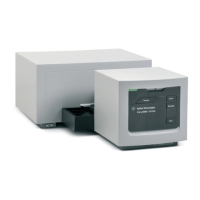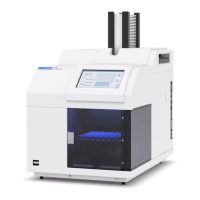Understanding Your Agilent ChemStation 71
Integration
4
The ChemStation Integrator Algorithms
The ChemStation Integrator Algorithms
The ChemStation integrator algorithm is the second revision of a new
generation aimed at improved ruggedness, reliability and ease-of-use.
Integrator Capabilities
The integrator algorithms include the following key capabilities:
• an autointegrate capability used to set up initial integrator parameters,
• the ability to define individual integration event tables for each
chromatographic/electropherographic signal if multiple signals or more
than one detector is used,
• interactive definition of integration events that allows users to graphically
select event times,
• graphical manual or rubber-band integration of
chromatogram/electropherograms requiring human interpretation (these
events may also be recorded in the method and used as part of the
automated operation),
• display and printing of integration results, and
• the ability to integrate at least 1000 peaks per
chromatogram/electropherograms.
• integrator parameter definitions to set or modify the basic integrator
settings for area rejection, height rejection, peak width and slope
sensitivity,
• baseline control parameters, such as force baseline, hold baseline, baseline
at all valleys, baseline at the next valley, fit baseline backwards from the
end of the current peak,
• area summation control,
• negative peak recognition,
• tangent skim processing including solvent peak definition commands, and
• the ability to define individual front/tail tangent skim calculations event
tables for all chromatographic/electropherographic signal,

